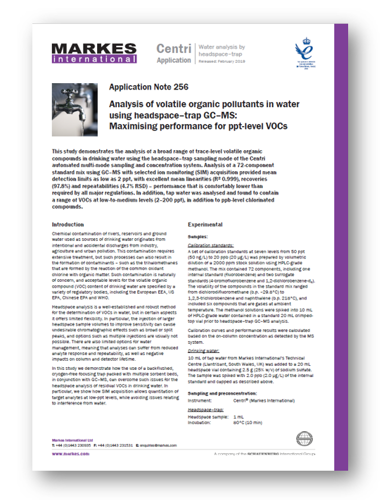
Analysis of volatile organic pollutants in water using headspace–trap GC–MS: Maximising performance for ppt-level VOCs
Application Note 256
 Chemical contamination of rivers, reservoirs and ground water used as sources of drinking water originates from discharges from industry, agriculture and urban pollution. Extensive treatment is required, but such processes can also result in the formation of contaminants – such as the trihalomethanes that are formed by the reaction of the common oxidant chlorine with organic matter.
Chemical contamination of rivers, reservoirs and ground water used as sources of drinking water originates from discharges from industry, agriculture and urban pollution. Extensive treatment is required, but such processes can also result in the formation of contaminants – such as the trihalomethanes that are formed by the reaction of the common oxidant chlorine with organic matter.
Acceptable levels for the volatile organic compound (VOC) content of drinking water are specified by a variety of regulatory bodies, including the European EEA, US EPA, Chinese EPA and WHO.
This application note demonstrates the analysis of a broad range of trace-level VOCs in drinking water using the headspace–trap sampling mode of the Centri® automated multi-mode sampling and concentration system.




